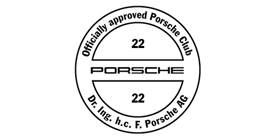I have just joined the forum and gone through the post.
I run an 03 boxster s and 03 C4s.
-running in-I think youve got it spot.
I make a point of driving off asap and selecting a gear which holds rpm at 2500rpm whilst the engine comes up to temperature.
-oil consumption-mines at 3500 mls ,I think I used about 3/4 litre of oil(I had an oil /filter change at 3000mls.
I' ve found all the cars give an accurate correlation between dipstick and dash but only if the car is level and has stood a while .If you take the first reading from the dash countdown its usually a bar lower.
I invite comments on some difficulties:
My clutch felt OK at first but suddenly the pedal needed more effort /travel -OPC sorted this by bleeding and said the problem was air.
Unfortunately the problem re-occurred and has been bled again.
Its not got the extended travel but still feels a bit inconsistent to me.
Lot stiffer than the boxster S
Anbody had this problem?Seems much more likely to be slave cylinder problem to me.
Oil pressure-I was at the Ist combe track day when I noticed a dramatic fall in oil pressure thro' the chicanes. For me and my limited skills its about 5000rpm in 2nd gear.
The drop was from nearly 5 bar down to 3 bar which slowly recovered on the straights.
Needless to say this moderated my driving.(others had not experienced the problem)
Like Mr Cooke I have the 345hp 03s engine which having driven a couple of std cars certainly offers a lot more at the top end although it sacrifices a bit circa 3000 rpm .
I returned the vehicle to the OPC and had the precautionery oil/filter change(the oil had
got a bit black during the track session) they also checked the fault memory without finding anything.
I then tried the car on a lightly used open r' about and could repeat the problem.
I again contacted the OPC and agreed to bring the car back and take out a mechanic(sorry-technician).
The day came and it rained,it was damp to wet but the car repeated the problem.
It was agreed to refer the matter to Porsche.
I returned the car and the OPC had then been advised to remove the engine sump and check the oil pick ups for cracks.
This investigation was done and they found no faults so they tested the car with a manual oil gauge(along with another C4s and C2)they all did it I was told.
I was not convinced and received a letter from Porsche stating it was standard practice to carry out the dismantling AND " it is a characteristic of the vehicle that the oil pressure will be regulated during cornering"
Confusing is' nt it that they would get them to take it to bits when they knew it to be normal?
Apparently Porsche GB gave the 1st instr and Germany the 2nd.
Naturally I was' nt happy.The OPC then took me out in a 1700ml press C4s (with pccb brakes!)on pirelli rosso' s and nailed it to 5000rpm 2nd gear and with the extra grip again got the oil pressure to drop to 23/4bar.
Its not very nice to be pushing the car asking for power and the only thing stopping keeping the metal apart goes on holiday!
So there we are- they C2,C4 and C4s all do it and they reckon its OK(piston cooling is from 1.8bar)
Handbook says " approx 3.5bar at 5000"
I was a bit mislead because I had a session with bernard at Chobham and neither of us could get rthe C4S demonstrator to do it(but it did have n/std wheels with spacers)
I also asked a lot of people in the trade and they had no knowledge of it.
OPC says I' m the first one to spot it?
Any comments?
I read the blurb and thought these dry sump /track proven designs would be free from this.Seems its the return of oil via the swirlpots that limits flow.
I run an 03 boxster s and 03 C4s.
-running in-I think youve got it spot.
I make a point of driving off asap and selecting a gear which holds rpm at 2500rpm whilst the engine comes up to temperature.
-oil consumption-mines at 3500 mls ,I think I used about 3/4 litre of oil(I had an oil /filter change at 3000mls.
I' ve found all the cars give an accurate correlation between dipstick and dash but only if the car is level and has stood a while .If you take the first reading from the dash countdown its usually a bar lower.
I invite comments on some difficulties:
My clutch felt OK at first but suddenly the pedal needed more effort /travel -OPC sorted this by bleeding and said the problem was air.
Unfortunately the problem re-occurred and has been bled again.
Its not got the extended travel but still feels a bit inconsistent to me.
Lot stiffer than the boxster S
Anbody had this problem?Seems much more likely to be slave cylinder problem to me.
Oil pressure-I was at the Ist combe track day when I noticed a dramatic fall in oil pressure thro' the chicanes. For me and my limited skills its about 5000rpm in 2nd gear.
The drop was from nearly 5 bar down to 3 bar which slowly recovered on the straights.
Needless to say this moderated my driving.(others had not experienced the problem)
Like Mr Cooke I have the 345hp 03s engine which having driven a couple of std cars certainly offers a lot more at the top end although it sacrifices a bit circa 3000 rpm .
I returned the vehicle to the OPC and had the precautionery oil/filter change(the oil had
got a bit black during the track session) they also checked the fault memory without finding anything.
I then tried the car on a lightly used open r' about and could repeat the problem.
I again contacted the OPC and agreed to bring the car back and take out a mechanic(sorry-technician).
The day came and it rained,it was damp to wet but the car repeated the problem.
It was agreed to refer the matter to Porsche.
I returned the car and the OPC had then been advised to remove the engine sump and check the oil pick ups for cracks.
This investigation was done and they found no faults so they tested the car with a manual oil gauge(along with another C4s and C2)they all did it I was told.
I was not convinced and received a letter from Porsche stating it was standard practice to carry out the dismantling AND " it is a characteristic of the vehicle that the oil pressure will be regulated during cornering"
Confusing is' nt it that they would get them to take it to bits when they knew it to be normal?
Apparently Porsche GB gave the 1st instr and Germany the 2nd.
Naturally I was' nt happy.The OPC then took me out in a 1700ml press C4s (with pccb brakes!)on pirelli rosso' s and nailed it to 5000rpm 2nd gear and with the extra grip again got the oil pressure to drop to 23/4bar.
Its not very nice to be pushing the car asking for power and the only thing stopping keeping the metal apart goes on holiday!
So there we are- they C2,C4 and C4s all do it and they reckon its OK(piston cooling is from 1.8bar)
Handbook says " approx 3.5bar at 5000"
I was a bit mislead because I had a session with bernard at Chobham and neither of us could get rthe C4S demonstrator to do it(but it did have n/std wheels with spacers)
I also asked a lot of people in the trade and they had no knowledge of it.
OPC says I' m the first one to spot it?
Any comments?
I read the blurb and thought these dry sump /track proven designs would be free from this.Seems its the return of oil via the swirlpots that limits flow.










